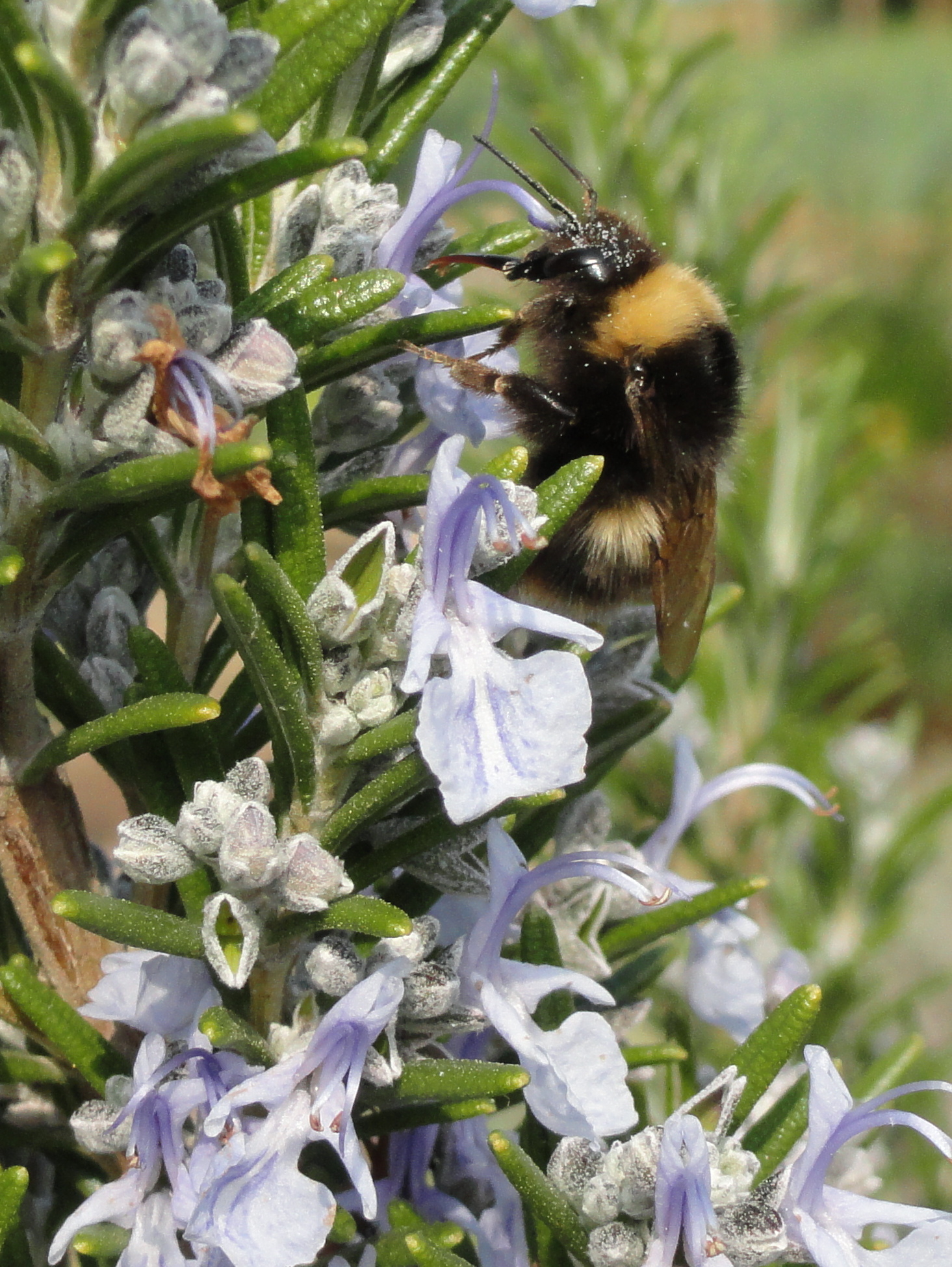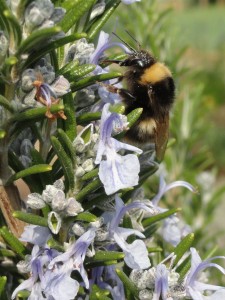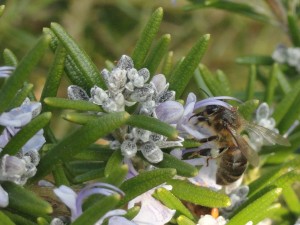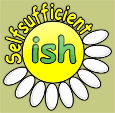
Many thanks to our latest guest blogger Mandy Allen, aka Millymollymandy, one of the longest standing and most loyal selfsufficientish forum members. She lives the good life in over in Chateau Moorhen, France and is a prolific gardener, nature lover and blogger.
 Pollinating insects such as bees, hoverflies and many other flying insects are absolutely essential to the reproduction of much plant life, to such an extent that if they disappeared then so would many types of fruit, vegetables, flowers and even some arable crops. For pollinating our fruit and vegetables which are not wind- or self-pollinated, it is predominantly bees which are our main allies so it’s these insects we need to encourage into our veg patches.
Pollinating insects such as bees, hoverflies and many other flying insects are absolutely essential to the reproduction of much plant life, to such an extent that if they disappeared then so would many types of fruit, vegetables, flowers and even some arable crops. For pollinating our fruit and vegetables which are not wind- or self-pollinated, it is predominantly bees which are our main allies so it’s these insects we need to encourage into our veg patches.
Bees are attracted to the nectar and pollen in flowers and gather pollen on their legs and bodies to feed to their offspring. Whilst flying between flowers of the same species drinking their nectar, pollen grains transfer from one flower to another as the bee moves around, allowing pollination to take place and the plant to reproduce by producing seed.
In an ideal world we would all have large gardens full of the kinds of flowers that attract the pollinators and the habitat that they require for survival. The reality is that many people who are interested in growing vegetables have neither the time, inclination nor space to grow flowering plants which attract these insects, or prefer to use all available space for vegetable growing.
So, one of the best ways to ensure that pollinators visit your allotment or garden rather than your neighbour’s is to allow a bit of space for flowering plants which are also useful to you. The plants I’m talking about are herbs, many of which are attractive plants in their own right, and which of course go hand-in-hand with vegetable growing, as the flavours will enhance those lovely dishes you will be preparing with the fruits of your labours!
This isn’t an exhaustive list by any means, but just a few suggestions to provide nectar for as long a period as possible. These plants can all be grown in tubs if ground space is not available, and require minimal attention, mostly just needing a haircut after flowering to tidy them up. Some will even repeat flower.
Early: Rosemary
Very early flowering and much loved by bees of many different species, rosemary is also one of the few herbs that is harvestable throughout the year, even in the depths of winter.
Spring: Chives
Main flowering time around April/May, then repeat flowering afterwards, bees will be attracted by the flowers. Don’t put all those flowers in your new potato salad, leave a few for the pollinators!
Early through late summer: Thyme, Oregano/Marjoram and Lavender
Whilst the first two are undoubtedly among the top culinary herbs for all sorts of flavourings, sauces and pizzas, lavender can be used in many ways, from the traditional lavender bag to flavouring bread and biscuits with the dried flowers and perfuming home-made toiletries. All three are adored by bees, which are attracted to the thousands of tiny flowers produced on each plant; a bonus with the first two is that butterflies love their nectar too, and there can be nothing more relaxing than just sitting awhile beside a patch of these herbs listening to the buzz of the bees as they go about their business and watching pretty butterflies flitting about.
Summer and autumn: Borage
This is an annual with beautiful sky blue and pink flowers which is an absolute bee magnet. Although it can be quite a large, sprawling plant, the beauty is that it flowers for months on end and self-seeds easily. Due to the large size of the seedlings they are easy to hoe off, or you could leave another plant to grow to take the place of the original, and have two crops in the same year – effectively giving you flowers for about six months of the year as it can survive light frosts. The added benefit to you is that both the leaves and the flowers are edible, and the flowers look especially attractive decorating a salad or floating in a summer drink.
Now you may well be thinking of your annual courgette and runner bean gluts, and saying that you have never had a problem with a lack of pollinating insects before, and also muttering that the last thing you want to do is encourage cabbage white butterflies into your garden. Well, cabbage whites are going to find your brassicas whether you grow nectar-rich flowers or not, but bees and other pollinating insects need our help, because their numbers are declining due to the loss of food and habitat, use of pesticides and herbicides and, in the case of honey bees, disease and parasites. Every little thing we can do to aid and encourage them by offering them food for as many months of the year as possible will help them, as after all, they are a gardener’s best friend.



You have forgotten the early flowering dandelion which is a great favourite – and edible. I have an allotment with hedges and always keep a few dandelions along the foot of these for the early flying insects.
Nice post 🙂 For even earlier flowers, I’ve noticed the heather in my garden attracts honey bees when nothing much else is in flower. I realise it’s not a herb, though I believe it can be used to flavour beer.
It can you are right!